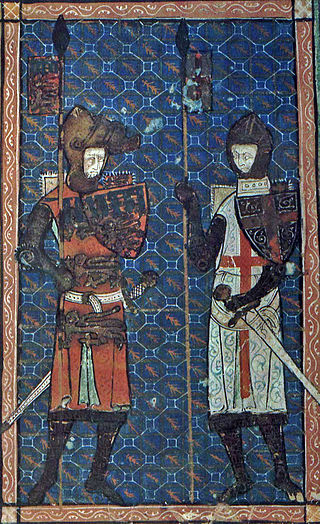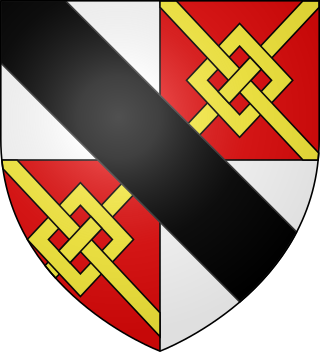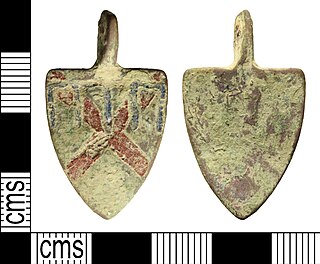
Edward II, also called Edward of Caernarfon, was King of England from 1307 until he was deposed in January 1327. The fourth son of Edward I, Edward became the heir to the throne following the death of his older brother Alphonso. Beginning in 1300, Edward accompanied his father on campaigns to pacify Scotland, and in 1307 he was knighted in a grand ceremony at Westminster Abbey. Edward succeeded to the throne later that year, following his father's death. In 1308, he married Isabella of France, the daughter of the powerful King Philip IV, as part of a long-running effort to resolve the tensions between the English and French crowns.

Isabella of France, sometimes described as the She-Wolf of France, was Queen of England as the wife of King Edward II, and regent of England for her son from 1327 until 1330. She was the youngest surviving child and only surviving daughter of Philip IV of France and Joan I of Navarre. Isabella was notable in her lifetime for her diplomatic skills, intelligence, and beauty. She overthrew her husband, becoming a "femme fatale" figure in plays and literature over the years, usually portrayed as a beautiful but cruel and manipulative figure.

Elizabeth de Clare, 11th Lady of Clare was the heiress to the lordships of Clare, Suffolk, in England and Usk in Wales. She was the youngest of the three daughters of Gilbert de Clare, 6th Earl of Hertford and Joan of Acre, and sister of Gilbert de Clare, who later succeeded as the 7th Earl. She is often referred to as Elizabeth de Burgh, due to her first marriage to John de Burgh. Her two successive husbands were Theobald II de Verdun and Roger d'Amory.

Thomas of Lancaster, 2nd Earl of Lancaster, 2nd Earl of Leicester, 2nd Earl of Derby, jure uxoris 4th Earl of Lincoln and jure uxoris 5th Earl of Salisbury was an English nobleman. A member of the House of Plantagenet, he was one of the leaders of the baronial opposition to his first cousin, King Edward II.

Edmund Fitzalan, 2nd Earl of Arundel was an English nobleman prominent in the conflict between King Edward II and his barons. His father, Richard Fitzalan, 1st Earl of Arundel, died in 1302, while Edmund was still a minor. He, therefore, became a ward of John de Warenne, Earl of Surrey, and married Warenne's granddaughter, Alice. In 1306 he was styled Earl of Arundel, and served under Edward I in the Scottish Wars, for which he was richly rewarded.

Edmund of Woodstock, 1st Earl of Kent, whose seat was Arundel Castle in Sussex, was the sixth son of King Edward I of England, and the second by his second wife Margaret of France, and was a younger half-brother of King Edward II. Edward I had intended to make substantial grants of land to Edmund, but when the king died in 1307, Edward II refused to respect his father's intentions, mainly due to his favouritism towards Piers Gaveston. Edmund remained loyal to his brother, and in 1321 he was created Earl of Kent. He played an important part in Edward's administration as diplomat and military commander and in 1321–22 helped suppress a rebellion.

Hugh le Despenser, sometimes referred to as "the Elder Despenser", was for a time the chief adviser to King Edward II of England. He was created a baron in 1295 and Earl of Winchester in 1322. One day after being captured by forces loyal to Sir Roger Mortimer and Edward's wife, Queen Isabella, who were leading a rebellion against Edward, he was hanged and then beheaded.

Hugh le Despenser, 1st Baron le Despenser, also referred to as "the Younger Despenser", was the son and heir of Hugh le Despenser, Earl of Winchester, by his wife Isabella de Beauchamp, daughter of William de Beauchamp, 9th Earl of Warwick. He rose to national prominence as royal chamberlain and a favourite of Edward II of England. Despenser made many enemies amongst the nobility of England. After the overthrow of Edward, he was eventually charged with high treason and ultimately hanged, drawn and quartered.

Eleanor de Clare, suo jure 6th Lady of Glamorgan was a powerful Anglo-Welsh noblewoman who married Hugh Despenser the Younger, the future favourite of Edward II of England, and was a granddaughter of Edward I of England. With her sisters, Elizabeth de Clare and Margaret de Clare, she inherited her father's estates after the death of her brother, Gilbert de Clare, 8th Earl of Gloucester, 7th Earl of Hereford at the Battle of Bannockburn in 1314. She was born in 1292 at Caerphilly Castle in Glamorgan, Wales and was the eldest daughter of Gilbert de Clare, 6th Earl of Hertford, 7th Earl of Gloucester, 5th Lord of Glamorgan and Princess Joan of Acre.

Isabella of Castile, Duchess of York was the daughter of King Peter and his mistress María de Padilla. She accompanied her elder sister, Constance, to England after Constance's marriage to John of Gaunt, 1st Duke of Lancaster, and married Gaunt's younger brother, Edmund of Langley, 1st Duke of York.
Events from the 1320s in England.
This article is about the particular significance of the century 1301–1400 to Wales and its people.
Joan de Geneville, 2nd Baroness Geneville, Countess of March, Baroness Mortimer, also known as Jeanne de Joinville, was the daughter of Sir Piers de Geneville and Joan of Lusignan. She inherited the estates of her grandparents, Geoffrey de Geneville, 1st Baron Geneville, and Maud de Lacy, Baroness Geneville. She was one of the wealthiest heiresses in the Welsh Marches and County Meath, Ireland. She was the wife of Roger Mortimer, 1st Earl of March, the de facto ruler of England from 1327 to 1330. She succeeded as suo jure 2nd Baroness Geneville on 21 October 1314 upon the death of her grandfather, Geoffrey de Geneville.

Margaret de Badlesmere, Baroness Badlesmere was a Anglo-Norman noblewoman, suo jure heiress, and the wife of Bartholomew de Badlesmere, 1st Baron Badlesmere.
Isabella de Beauchamp, Lady Kidwelly, Baroness Despenser, was an English noblewoman and wealthy heiress.
Maud FitzJohn, Countess of Warwick was an English noblewoman and the eldest daughter of John FitzGeoffrey, Lord of Shere. Her second husband was William de Beauchamp, 9th Earl of Warwick, a celebrated soldier. Through her daughter, Isabella, Maud was the maternal grandmother of Hugh the younger Despenser, the unpopular favourite of King Edward II of England, who was executed in 1326.
Elizabeth de Comyn was a medieval noblewoman and heiress, notable for being kidnapped by the Despenser family towards the end of the reign of King Edward II.
The Despenser War (1321–22) was a baronial revolt against Edward II of England led by the Marcher Lords Roger Mortimer and Humphrey de Bohun. The rebellion was fuelled by opposition to Hugh Despenser the Younger, the royal favourite. After the rebels' summer campaign of 1321, Edward was able to take advantage of a temporary peace to rally more support and a successful winter campaign in southern Wales, culminating in royal victory at the Battle of Boroughbridge in the north of England in March 1322. Edward's response to victory was his increasingly harsh rule until his fall from power in 1326.
Alice de Lacy, suo jure Countess of Lincoln, suo jure 5th Countess of Salisbury was an English peeress.
Sir William Trussell was an English politician and leading rebel in Queen Isabella and Roger Mortimer, 1st Earl of March's rebellion against Edward II. William acted as Speaker of the House of Commons and renounced the allegiance of England to Edward II, forcing his abdication, and became King Edward III's Secretary.












